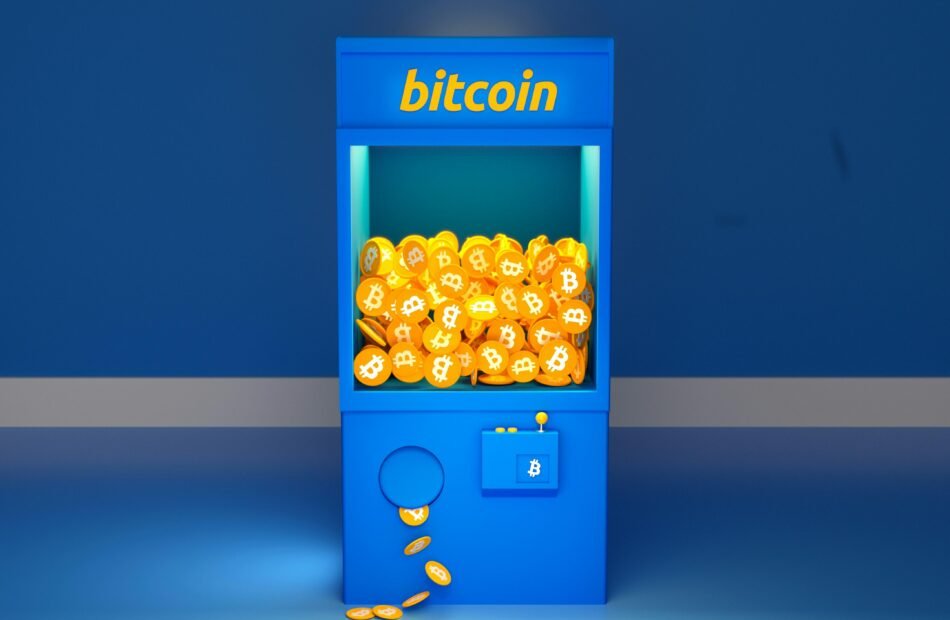Bitcoin Halving Aftermath: How the 2024 Event Shapes 2025 Prices
As the crypto world braces itself for the 2024 Bitcoin halving, anticipation runs high—and questions abound. This pivotal event, cutting the block rewards in half, is more than a technical adjustment; it’s a seismic shift that has historically rewritten Bitcoin’s price narrative. But what lies beyond the halving itself? How will this adjustment ripple through the market in 2025, influencing investor behavior, miner dynamics, and ultimately, Bitcoin’s value? In this exploration, we delve into the aftermath of the 2024 halving, unraveling its complex impact and contemplating the trajectory of Bitcoin prices in the year ahead.
Table of Contents
- Bitcoin Halving and Market Dynamics Unveiled
- Supply Shock Implications on Bitcoin’s Value Trajectory
- Investor Behavior Shifts in the Post-Halving Landscape
- Mining Ecosystem Adjustments and Network Security
- Regulatory Influences on Bitcoin Price Movements
- Strategic Approaches for Navigating 2025’s Volatility
- Q&A
- In Conclusion

Bitcoin Halving and Market Dynamics Unveiled
In the wake of the 2024 Bitcoin halving, market participants are closely watching how the reduced supply of new bitcoins will ripple across prices in 2025. Historically, every halving event slashes miner rewards by 50%, tightening the flow of new coins and triggering shifts in market sentiment. This adjustment has a profound effect on miner operations, leading to changes in transaction fees, network security dynamics, and overall supply-demand equilibrium. Traders and investors often anticipate increased volatility during this period as the market processes the fundamental supply shock.
The interplay between diminished coin issuance and investor behavior can be distilled into several core dynamics:
- Supply Constraint: Halving directly reduces mining rewards, limiting new bitcoin inflows and increasing scarcity.
- Market Sentiment: Optimism often builds ahead of and following halving events, driven by expectations of price appreciation.
- Mining Economics: Efficiency pressures mount on miners, potentially leading to network hash rate fluctuations that can influence transaction processing.
- Long-Term Price Trends: Reduced supply juxtaposed with growing adoption often lays the groundwork for sustained upward price momentum.
| Factor | Pre-Halving Impact | Post-Halving Trend |
|---|---|---|
| Mining Rewards | 12.5 BTC/block | 6.25 BTC/block |
| Network Hash Rate | Stable/Increasing | Volatility Expected |
| Price Volatility | Moderate | Elevated |
| Market Liquidity | High | Variable |

Supply Shock Implications on Bitcoin’s Value Trajectory
The 2024 halving event triggers a fundamental shift in Bitcoin’s issuance rate, slashing the block reward by half and tightening the supply considerably. This sudden reduction in new BTC entering the market often leads to an immediate scarcity effect, driving demand dynamics in unexpected ways. Investors and miners alike navigate a landscape defined by increased cost of production and diminished mining incentives, setting the stage for a potential realignment of price levels. Historically, these supply shocks have catalyzed sharp upward price movements, yet the market’s evolving maturity means the trajectory might exhibit more nuanced responses this time around.
Several key factors evolve as a direct consequence of the supply shock:
- Heightened scarcity: The halving reduces the influx of fresh coins, intensifying supply constraints.
- Mining paradigm shift: Profit margins shrink, pushing miners to optimize or shut down inefficient operations.
- Market psychology: Anticipation of scarcity fuels buying pressure, even from speculative investors.
These elements collectively forge a complex environment where Bitcoin’s price action can experience increased volatility, yet with an underlying bullish posture. Below is a simple overview of how past halving events influenced average monthly prices in the subsequent year, offering a glimpse of potential trends moving into 2025.
| Halving Year | Avg Price 12 Months Prior | Avg Price 12 Months After | Price Change (%) |
|---|---|---|---|
| 2012 | $5 | $130 | +2500% |
| 2016 | $450 | $6000 | +1233% |
| 2020 | $8700 | $50000 | +474% |

Investor Behavior Shifts in the Post-Halving Landscape
In the wake of the 2024 halving, investors are recalibrating their strategies to adapt to the new supply shock. The reduced block rewards have intensified the scarcity narrative, pushing many to adopt a long-term holding perspective rather than chasing short-term gains. This shift reflects a broader confidence in Bitcoin’s value proposition as a deflationary asset. Additionally, institutional players are increasingly integrating Bitcoin into diversified portfolios, seeing it as a digital hedge against inflation and geopolitical uncertainties.
Several behavioral trends have emerged among investors:
- Increased emphasis on fundamental analysis: Market participants are paying closer attention to mining activity, network health, and on-chain metrics to time entry points.
- Rising preference for dollar-cost averaging (DCA): Steady accumulation is favored over large lump-sum investments to mitigate volatility risk.
- Heightened sensitivity to macroeconomic indicators: Interest rates, regulatory developments, and global economic signals play a larger role in decision-making.
These evolving behaviors are painting a more mature market landscape, where price movements post-halving become a complex interplay of supply constraints and investor psychology.

Mining Ecosystem Adjustments and Network Security
In the wake of the 2024 halving, miners face a compelling crossroads, balancing reduced block rewards against the imperative of maintaining robust network security. The lower incentive has driven many to innovate, adopting cutting-edge ASIC hardware and optimizing energy consumption to stay profitable. This dynamic fosters a reshaped mining ecosystem where efficiency isn’t just advantageous—it’s essential, influencing who remains in the game and how the network’s hash rate fluctuates over time.
Security, the backbone of Bitcoin’s trust model, reacts directly to these shifts. While some smaller players may exit due to diminished margins, larger mining pools often consolidate their influence, reinforcing the network but sparking debates around decentralization. Key factors redefining this landscape include:
- Energy-efficient technology adoption – reducing operational costs and environmental footprints.
- Mining pool dynamics – evolving strategies to maintain decentralization despite consolidation trends.
- Geographical shifts – new mining hubs emerging where regulations and energy prices align favorably.
| Mining Aspect | Post-Halving Impact |
|---|---|
| Hash Rate Stability | Initial dips followed by recovery as efficiency improves |
| Miner Profit Margins | Compressed, pushing towards cost optimization |
| Network Security | Maintained through technological and strategic adaptation |

Regulatory Influences on Bitcoin Price Movements
Regulatory frameworks across the globe act as a powerful undercurrent influencing Bitcoin’s price waves, especially in the volatile period following a halving event. Governments and financial authorities often approach Bitcoin with caution, unveiling policies that can either bolster confidence or trigger market hesitation. Key regulatory announcements, such as crackdowns on crypto exchanges or the legitimization of Bitcoin as a payment method, tend to create sharp price ripples. The 2024 halving is no exception; traders are keenly watching regulatory developments to gauge the asset’s trajectory into 2025.
Analyzing recent patterns, several influential factors emerge:
- Licensing Regulations: Stringent requirements can slow institutional adoption, dampening price momentum.
- Taxation Policies: Favorable tax rulings can incentivize holding, while heavy taxes might trigger sell-offs.
- Cross-Border Collaboration: Harmonized crypto laws internationally often lead to more fluid trading markets.
- Consumer Protection Rules: Enhancements here can boost retail investor participation.
| Regulatory Action | Potential Price Impact | Example Region |
|---|---|---|
| Crypto Exchange Ban | Sharp Decline | China |
| Tax Incentives | Gradual Rise | Portugal |
| Legal Tender Status | Strong Rally | El Salvador |
| Enhanced KYC/AML | Short-term Volatility | USA |

Strategic Approaches for Navigating 2025’s Volatility
To thrive amid the unpredictable waves of the post-halving landscape, investors should adopt a diversified and dynamic strategy. Emphasizing flexibility over rigidity allows for quick adaptation to market signals without falling prey to emotional decision-making. Key tactics include:
- Layered Entry Points: Gradually scaling into positions mitigates risk against sudden volatility spikes.
- Technical and Sentiment Analysis Fusion: Combining data-driven charts with real-time market sentiment helps anticipate turning points more reliably.
- Stablecoin Reserves: Maintaining liquidity in stable assets empowers timely purchases during downward corrections.
Moreover, staying informed about macroeconomic influences and global regulatory changes is crucial, as these elements tend to amplify the intrinsic ripple effects of the halving. Utilizing tools such as volatility indexes and heat maps can enhance situational awareness. Below is a quick comparison table to weigh strategic focus areas for 2025:
| Strategy Aspect | Focus | Potential Benefit |
|---|---|---|
| Risk Management | Stop-loss & Position sizing | Limits downside during abrupt swings |
| Technical Indicators | Moving Averages & RSI | Signals entry/exit in fluctuating trends |
| Market Sentiment | News & Social Media Trends | Early detection of shifts in investor mood |
Q&A
Q&A: Bitcoin Halving Aftermath – How the 2024 Event Shapes 2025 Prices
Q1: What is a Bitcoin halving, and why is it important?
A1: Bitcoin halving is an event that happens roughly every four years, where the reward miners receive for adding new blocks to the blockchain is cut in half. This mechanism limits the supply of new bitcoins entering circulation, making it a vital factor in Bitcoin’s scarcity and, historically, its price movements.
Q2: What occurred during the 2024 Bitcoin halving?
A2: In 2024, the block reward dropped from 6.25 BTC to 3.125 BTC per block. This sudden reduction decreased the daily influx of new bitcoins, tightening supply and triggering a recalibration in mining economics and market sentiment.
Q3: How did the 2024 halving affect miners?
A3: Miners faced slimmer profit margins since they earned fewer bitcoins per block, despite relatively constant electricity and hardware costs. Many less efficient miners either upgraded their equipment or paused operations, which impacted the overall network hash rate and security temporarily.
Q4: What was the immediate market reaction following the 2024 halving?
A4: The immediate aftermath saw heightened volatility. Some investors anticipated scarcity-driven rallies, while others expressed caution amid increased uncertainty. Price corrections and consolidation periods were common as the market absorbed the new supply dynamics.
Q5: How does the halving influence Bitcoin prices in 2025?
A5: Historically, halvings tend to precede bullish phases, with the reduced supply fueling upward price pressure over several months to years. By 2025, the market often prices in scarcity, which can lead to renewed interest from institutional and retail investors, potentially pushing prices higher—though external factors like regulatory shifts and global economic conditions also play crucial roles.
Q6: Could the 2024 halving outcome differ from previous events?
A6: While past halvings provide a blueprint, the Bitcoin ecosystem evolves continually. Variables such as increased adoption, technological advancements, geopolitical influences, and changes in mining operations may alter price trajectories compared to previous cycles.
Q7: What should investors keep in mind when considering Bitcoin post-halving?
A7: Investors should remain aware that despite historical trends, Bitcoin markets can be unpredictable. Balancing long-term enthusiasm with risk management, paying attention to macroeconomic conditions, and understanding the halving’s impact beyond price—such as network security and miner sustainability—are essential for informed decision-making.
Q8: In summary, what does the 2024 halving mean for Bitcoin’s future?
A8: The 2024 halving reaffirmed Bitcoin’s foundational design of controlled supply. Its aftermath is shaping the 2025 landscape by fostering scarcity, influencing miner behavior, and setting the stage for potential price appreciation. However, the path ahead is nuanced, blending innovation, market forces, and global dynamics into Bitcoin’s unfolding story.
In Conclusion
As the dust settles on the 2024 Bitcoin halving, the crypto community stands at a crossroads, watching closely how this pivotal moment will ripple through the markets in 2025. While history offers clues, the path ahead remains uniquely sculpted by emerging technologies, regulatory landscapes, and investor sentiment. What remains certain is that each halving writes a new chapter in Bitcoin’s evolving story—one where anticipation meets adaptation, and every price movement carries the weight of a collective future. As we move forward, staying informed and agile will be key to navigating the shifting sands of the digital currency frontier.





Leave a Reply